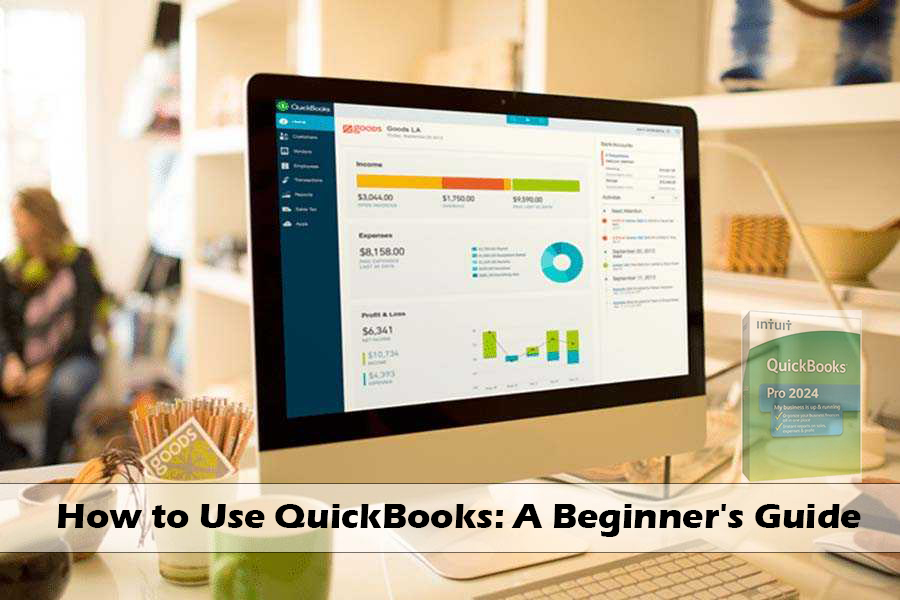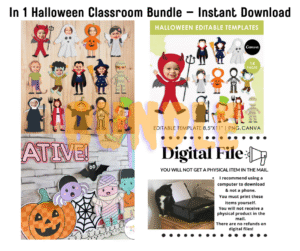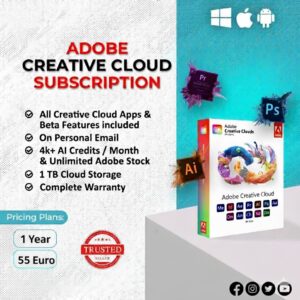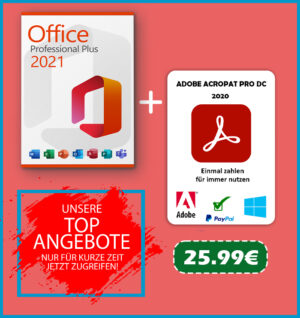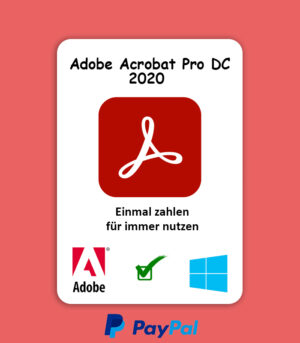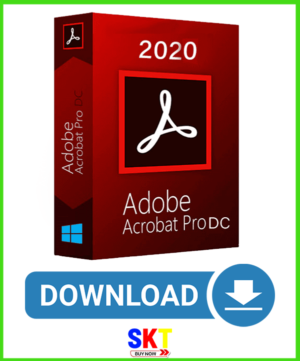Welcome to our comprehensive Quickbooks desktop tutorial designed specifically for beginners. Managing your finances effectively is crucial for the success of your business, and QuickBooks is a powerful tool that can help you achieve this.
As a beginner, getting started with QuickBooks can seem daunting, but with this guide, you’ll be able to navigate its features with ease. Our QuickBooks for beginners guide will walk you through the basics, helping you set up your financial management system and get started on the right foot.

By the end of this guide, you’ll have a solid understanding of how to utilize QuickBooks to streamline your financial processes.
Key Takeaways
- Understand the basics of QuickBooks and its importance in financial management.
- Learn how to set up your QuickBooks account and navigate its interface.
- Discover how to manage your finances effectively using QuickBooks features.
- Get started with tracking your income and expenses accurately.
- Understand how to generate financial reports to inform your business decisions.
Understanding Quickbooks desktop Basics
For businesses looking to streamline their financial operations, understanding QuickBooks is essential. QuickBooks is a comprehensive financial management tool that helps businesses manage their finances more efficiently.
What is Quickbooks desktop and Why Use It?
QuickBooks is an accounting software developed by Intuit, designed to help businesses manage their financial transactions, including income, expenses, and invoices. It’s a powerful tool for financial management, offering features such as financial reporting, inventory management, and payroll processing.
Using QuickBooks can help businesses save time on financial tasks, reduce errors, and make informed decisions based on real-time financial data. As noted by financial experts, “QuickBooks simplifies financial management, allowing businesses to focus on growth and development.”
“QuickBooks is a game-changer for small businesses, providing a clear picture of their financial health.”
Quickbooks desktop Online vs. Desktop Versions
QuickBooks is available in two main versions: Online and Desktop. QuickBooks Online is a cloud-based solution, offering flexibility and accessibility from anywhere, at any time. It’s ideal for businesses with remote workers or those who need to access their financial data on the go.
QuickBooks Desktop, on the other hand, is installed directly on a computer, providing a more traditional accounting experience. It’s suitable for businesses with complex financial needs or those who prefer a more hands-on approach to financial management.
- QuickBooks Online: Cloud-based, accessible anywhere, ideal for remote teams.
- QuickBooks Desktop: Installed on a computer, suitable for complex financial needs.
Getting Started with Quickbooks desktop
Embarking on your QuickBooks journey begins with making informed decisions about the version that suits your business needs. To ensure a smooth start, it’s crucial to understand the initial steps involved in setting up QuickBooks for your business.
Choosing the Right Quickbooks desktop Version for Your Business
QuickBooks offers various versions tailored to different business sizes and types. QuickBooks Online is ideal for businesses that require cloud accessibility, while QuickBooks Desktop is better suited for those who need more advanced features and prefer local installation. Consider your business needs, such as the number of users and required features, to choose the most appropriate version.
- Assess your business size and type
- Consider the number of users
- Evaluate the features you need
System Requirements and Installation
Before installing QuickBooks, ensure your system meets the minimum system requirements. This includes having a compatible operating system, sufficient RAM, and adequate disk space. Once your system is ready, you can proceed with the installation process, following the on-screen instructions provided by the QuickBooks installer.
Creating Your Company Profile
After installing Quickbooks desktop, the next step is to create your company profile. This involves entering your business details, such as your company name, address, and tax information. Accurately filling out this information is crucial as it forms the foundation of your financial data in QuickBooks.
- Enter your company name and address
- Provide your tax identification number
- Set up your accounting preferences
By following these steps, you’ll be well on your way to effectively using QuickBooks for your business financial management.
Setting Up Your Quickbooks desktop Account
Configuring your QuickBooks account is a pivotal step in managing your financial data efficiently. A well-set-up account ensures that you can track your financial transactions accurately and make informed decisions for your business.
Configuring Your Chart of Accounts
Your chart of accounts is the backbone of your financial management system in Quickbooks desktop. It contains a comprehensive list of accounts that categorize your financial transactions. To configure it:
- Navigate to the “Chart of Accounts” under the “Accounting” tab.
- Review the default accounts created by QuickBooks and adjust them according to your business needs.
- Add new accounts by clicking on “New” and specifying the account type and details.
Tip: Ensure your chart of accounts is tailored to your business requirements to facilitate accurate financial reporting.
Setting Up Customers and Vendors
Properly setting up your customers and vendors in QuickBooks is crucial for managing sales, purchases, and cash flow. To do this:
- Go to the “Sales” tab to manage customers, and click on “Customers” to add new ones.
- For vendors, navigate to the “Expenses” tab, select “Vendors,” and then “New Vendor.”
- Enter detailed information for both customers and vendors, including contact details and payment terms.
Accurate customer and vendor information helps in maintaining healthy business relationships and ensures timely payments.
Importing Existing Financial Data
If you’re transitioning from another accounting system or spreadsheet, importing your existing financial data into QuickBooks can save time. QuickBooks allows you to import:
- Customer and vendor lists.
- Chart of accounts.
- Historical transactions.
To import data, use the “Import Data” tool found under the “Settings” or “Tools” menu, depending on your QuickBooks version. Ensure data accuracy during the import process to avoid discrepancies in your financial reports.
How to Use Quickbooks desktop for Daily Bookkeeping
Daily bookkeeping in QuickBooks encompasses a range of tasks, from recording sales and income to reconciling accounts. By mastering these tasks, businesses can maintain accurate and up-to-date financial records, which are crucial for making informed decisions.
Recording Sales and Income
Recording sales and income accurately is vital for understanding your business’s financial health. In QuickBooks, you can easily record sales by creating invoices or sales receipts. To do this, navigate to the “Sales” tab, select “Create Invoices” or “Create Sales Receipts,” and fill in the required information, including the customer’s name, date, and amount. QuickBooks allows you to track sales by different categories, such as product or service, helping you analyze which areas of your business are performing well.
For instance, if you’re selling products, you can create a sales receipt for each transaction, ensuring that your income is recorded accurately. You can also customize your invoices and sales receipts to include your business logo and other relevant details, enhancing your professional image.
Managing Expenses and Bills
Managing expenses and bills effectively is another critical aspect of daily bookkeeping in QuickBooks. To manage expenses, you can enter bills into QuickBooks, track expenses, and pay vendors directly through the platform. Start by going to the “Expenses” tab and selecting “Enter Bills” to record your expenses. You can then categorize these expenses appropriately, such as rent, utilities, or supplies.
QuickBooks enables you to track the status of your bills, whether they are pending, paid, or overdue, ensuring you stay on top of your financial obligations. You can also set reminders for bill due dates to avoid late payments.
- Enter bills as they arrive to keep your records up-to-date.
- Categorize expenses to understand where your money is going.
- Pay bills directly through QuickBooks to streamline your workflow.
Handling Bank Transactions
Handling bank transactions in QuickBooks involves connecting your bank accounts to the software, allowing for seamless transaction recording and reconciliation. To connect your bank account, go to the “Banking” tab, select “Add Account,” and follow the prompts to link your account.
Once connected, QuickBooks will automatically import your bank transactions, making it easier to categorize and reconcile your transactions. You can match transactions to existing entries in QuickBooks or add new transactions as needed.
Reconciling Accounts
Reconciling your accounts is a crucial step in ensuring the accuracy of your financial records. In QuickBooks, you can reconcile your bank and credit card statements to verify that your records match your bank’s records. To reconcile an account, go to the “Banking” tab, select “Reconcile,” and choose the account you want to reconcile.
Carefully review each transaction to ensure it is accurate and correctly categorized. If you find any discrepancies, QuickBooks provides tools to help you identify and correct the issues, ensuring your financial records are accurate and reliable.
- Select the account to reconcile.
- Enter the ending balance and ending date from your bank statement.
- Review and match transactions.
- Investigate and correct any discrepancies.
Managing Customers and Sales
With QuickBooks, businesses can efficiently manage customer information, sales transactions, and financial data in one place. This capability is crucial for maintaining organized records and ensuring timely payments.
Creating and Sending Professional Invoices
Creating professional invoices is a critical aspect of managing sales. QuickBooks allows users to generate customized invoices that reflect their brand identity. To create an invoice, navigate to the “Sales” tab, select “Invoices,” and fill in the required customer and product details. You can also add a personal touch by including a message or a logo on the invoice.
Key Features of Quickbooks desktopInvoicing:
- Customizable templates
- Automated calculations
- Multiple payment options
Tracking Customer Payments and Receivables
Tracking customer payments and receivables is essential for maintaining a healthy cash flow. QuickBooks enables users to monitor customer payments, track outstanding balances, and send reminders for overdue payments. By regularly updating customer payment information, businesses can make informed decisions about their financial health.
| Customer Name | Invoice Amount | Payment Status |
|---|---|---|
| ABC Corporation | $1,000 | Paid |
| XYZ Inc. | $500 | Pending |
| DEF Enterprises | $2,000 | Overdue |
Managing Customer Information and History
Managing customer information and history is vital for building strong customer relationships. QuickBooks allows businesses to store detailed customer records, including contact information, transaction history, and notes. This information can be used to provide personalized service and improve customer satisfaction.
Best Practices for Customer Management:
- Regularly update customer information
- Use customer history to inform sales strategies
- Personalize customer interactions
Vendor and Expense Management
Vendor and expense management are critical components of a well-organized financial system in QuickBooks. Efficiently managing vendors and expenses is essential for maintaining good business relationships and ensuring the financial health of your company.
Creating Purchase Orders
Creating purchase orders in QuickBooks is a straightforward process that helps you track orders and manage your inventory effectively. To create a purchase order, navigate to the “Vendors” menu, select “Purchase Orders,” and then click “New.” Fill in the required details, including the vendor, date, and items or services being purchased. Using purchase orders helps prevent overspending and ensures that you have the necessary stock on hand.

Managing and Paying Bills
Managing and paying bills is another crucial aspect of vendor management in QuickBooks. To manage bills, go to the “Vendors” menu and select “Enter Bills.” Here, you can record the bills you need to pay, categorize expenses, and track due dates. QuickBooks allows you to pay bills directly from the system, making it easier to manage cash flow. You can also set up recurring bills for regular expenses, streamlining your financial management process.
| Bill Management Task | Description | QuickBooks Feature |
|---|---|---|
| Recording Bills | Entering bills into the system for payment | Enter Bills |
| Paying Bills | Making payments to vendors | Pay Bills |
| Tracking Due Dates | Monitoring when bills are due | Bill Tracking |
Tracking Vendor Information and History
Tracking vendor information and history is vital for maintaining good relationships with your suppliers. In QuickBooks, you can store detailed information about each vendor, including contact details, payment terms, and transaction history. This information helps you manage your interactions with vendors more effectively and make informed decisions about your purchasing activities. By regularly reviewing vendor performance, you can identify areas for improvement and negotiate better terms when needed.
Regularly updating vendor information ensures that your records are accurate and up-to-date, facilitating smoother transactions and better financial management.
Payroll Processing in Quickbooks desktop
Payroll processing is a critical task for businesses, and with QuickBooks, it becomes more manageable. Accurate payroll processing ensures that employees are paid correctly and on time, and it helps businesses comply with tax regulations.
Setting Up Payroll Features
To start using QuickBooks for payroll, you first need to set up the payroll features. This involves enabling payroll in your QuickBooks account and configuring the payroll settings according to your business needs. You will need to enter information about your company, such as your federal and state tax IDs, and set up your payroll schedule. QuickBooks guides you through this process, making it relatively straightforward.
Key steps in setting up payroll features include:
- Enabling payroll in QuickBooks
- Configuring payroll settings
- Entering company tax information
- Setting up your payroll schedule
Running Payroll and Managing Taxes
Once your payroll is set up, you can start running payroll in QuickBooks. The software allows you to process payroll quickly, calculate taxes, and generate pay stubs. QuickBooks also helps you manage your tax obligations by keeping track of tax payments and filings. You can easily review and correct payroll data before finalizing your payroll.
Efficient payroll processing in QuickBooks also involves:
- Processing payroll and generating pay stubs
- Managing tax payments and filings
- Reviewing and correcting payroll data
Generating and Understanding Financial Reports
To navigate the complex financial landscape of your business, leveraging QuickBooks’ financial reporting capabilities is essential. Financial reports provide a snapshot of your company’s financial health, helping you make informed decisions.
Essential Financial Reports for Small Businesses
QuickBooks offers a variety of financial reports that are crucial for small businesses. These include the Balance Sheet, which provides a snapshot of your company’s financial position at a specific point in time, and the Profit and Loss Statement, which details your income and expenses over a period. Other essential reports include the Cash Flow Statement and Accounts Receivable/Payable Reports, which help in managing your cash flow and understanding your business’s liquidity.
- Balance Sheet
- Profit and Loss Statement
- Cash Flow Statement
- Accounts Receivable/Payable Reports
Customizing Reports for Your Needs
QuickBooks allows you to customize financial reports to suit your specific needs. You can filter reports by date, customer, or product, and even modify the layout to include or exclude certain details. This flexibility ensures that you get the information you need without sifting through irrelevant data. Customization can be done by clicking on the “Customize Report” button, which is usually found on the report screen.
Analyzing Business Performance with Reports
Analyzing financial reports is key to understanding your business’s performance. By regularly reviewing your financial reports, you can identify trends, spot potential issues, and make informed decisions about future investments or cost-cutting measures. For instance, a rising trend in your Accounts Receivable could indicate a need to tighten your credit policies, while a consistent increase in sales could signal a successful marketing strategy.
As noted by financial experts, “Regular review of financial reports is crucial for strategic business planning and ensuring long-term sustainability.”
Advanced Quickbooks desktop Features
Utilizing QuickBooks’ advanced features can revolutionize your financial management processes. These features are designed to enhance efficiency, accuracy, and decision-making.
Streamlining with Automation
One of the key advanced features is the ability to automate recurring transactions. This feature allows businesses to schedule repetitive tasks, such as bill payments and invoice generation, ensuring timely and accurate financial transactions without manual intervention.
- Reduce manual errors
- Save time on repetitive tasks
- Improve financial accuracy
Quickbooks desktop on the Go
The QuickBooks mobile app provides the flexibility to manage finances on the go. With this app, users can access their financial data, send invoices, and track expenses from their mobile devices, ensuring that business operations continue uninterrupted.
- Access financial data anywhere
- Send invoices and track payments
- Manage expenses on the move
Seamless Integration
QuickBooks Desktop also offers integration with other business tools, enhancing its functionality and allowing for a more streamlined workflow. By integrating with third-party applications, businesses can automate workflows, synchronize data, and improve overall efficiency.

Data Security and Backup
With QuickBooks Desktop , safeguarding your financial information is paramount. As you manage your business finances, it’s essential to ensure that your data is secure and backed up regularly.
Securing Your Financial Data
To secure your QuickBooks data, start by setting up user roles and permissions. This allows you to control who can access sensitive financial information. Additionally, use strong passwords and enable two-factor authentication to add an extra layer of security.
- Limit user access to sensitive data
- Regularly update your QuickBooks software
- Use antivirus software to protect against malware
By taking these measures, you can significantly reduce the risk of data breaches and unauthorized access.
Creating and Managing Backups
Creating regular backups of your QuickBooks data is crucial for preventing data loss. You can use the built-in backup feature in QuickBooks to create a backup of your company file.
- Go to the “File” menu and select “Backup Company”
- Choose “Create Local Backup” and follow the prompts
- Schedule regular backups to ensure your data is always protected
It’s also a good idea to store your backups in a secure, off-site location, such as cloud storage. This ensures that your data is safe even in the event of a physical disaster.
Troubleshooting Common Quickbooks desktop Issues
Effective troubleshooting is key to resolving the most common QuickBooks issues. Despite its robust functionality, users may encounter problems that can hinder their workflow. Understanding how to identify and fix these issues is crucial for maintaining a smooth operation.
Fixing Data Errors and Discrepancies
Data errors in QuickBooks can arise from various sources, including incorrect data entry or corrupted files. To fix these errors, users can utilize the QuickBooks Desktop File Doctor, a tool designed to diagnose and repair common data issues. Additionally, ensuring that all users are logged out and restarting the system can sometimes resolve discrepancies.
| Error Type | Common Cause | Resolution |
|---|---|---|
| Data Corruption | Improper Shutdown | Use QuickBooks File Doctor |
| Incorrect Data Entry | User Mistake | Manual Correction |
Resolving Sync and Connection Problems
Sync and connection issues can occur when Quickbooks desktop is unable to communicate effectively with banks or other integrated services. To resolve these problems, check your internet connection and ensure that the relevant services are properly configured. Updating QuickBooks Desktop to the latest version can also help resolve sync issues, as newer versions often include fixes for known problems.
For persistent issues, consulting the Quickbooks desktop support resources or contacting their customer service can provide further assistance.
Conclusion
By following this comprehensive quickbooks tutorial, you’ve gained a solid understanding of how to use QuickBooks Desktop for your small business accounting needs. From setting up your company profile to managing customers and vendors, you’ve learned how to navigate the software with ease.
As you continue to use QuickBooks, you’ll discover more advanced features that can help streamline your financial management processes. With QuickBooks, you can automate tasks, track expenses, and generate insightful financial reports, making it an indispensable tool for small business accounting.
By mastering QuickBooks Desktop , you’ll be able to make informed decisions, reduce errors, and improve your overall financial performance. Take the next step in your small business accounting journey and explore the full potential of QuickBooks.
FAQ
What is Quickbooks desktop and how does it work?
QuickBooks is an accounting software designed to help businesses manage their financial transactions, including income, expenses, and invoices. It works by allowing users to set up a company profile, track financial data, and generate reports to analyze business performance.
What are the differences between Quickbooks desktop Online and Desktop versions?
QuickBooks Online is a cloud-based version that allows users to access their financial data from anywhere, while the Desktop version is installed on a single computer. QuickBooks Desktop Online offers more flexibility and automatic backups, while the Desktop version provides more control over data and is suitable for businesses with complex accounting needs.
How do I choose the right QuickBooks version for my business?
To choose the right QuickBooks version, consider your business needs, such as the number of users, the complexity of your accounting needs, and your budget. You can also consider factors like scalability, security, and customer support.
How do I set up my company profile in QuickBooks?
To set up your company profile in QuickBooks Desktop , follow the on-screen instructions to enter your business information, including your company name, address, and tax information. You will also need to set up your chart of accounts, customers, and vendors.
How do I record sales and income in QuickBooks Desktop ?
To record sales and income in QuickBooks, you can create invoices, track payments, and deposit funds into your bank account. You can also use the sales receipt feature to record cash sales.
How do I manage expenses and bills in QuickBooks Desktop ?
To manage expenses and bills in QuickBooks, you can enter bills, track expenses, and pay vendors. You can also use the expense tracking feature to categorize and analyze your business expenses.
How do I reconcile my bank accounts in QuickBooks Desktop ?
To reconcile your bank accounts in QuickBooks, follow the on-screen instructions to match your QuickBooks transactions with your bank statement. This ensures that your financial records are accurate and up-to-date.
Can I integrate QuickBooks Desktop with other business tools?
Yes, QuickBooks Desktop can be integrated with various business tools, such as payment gateways, e-commerce platforms, and CRM systems. This allows you to streamline your business processes and improve efficiency.
How do I secure my financial data in QuickBooks Desktop ?
To secure your financial data in QuickBooks, use strong passwords, enable two-factor authentication, and limit user access to sensitive data. You should also regularly back up your data to prevent loss in case of a disaster.
What are the system requirements for running QuickBooks Desktop ?
The system requirements for running QuickBooks Desktop vary depending on the version and edition. Generally, QuickBooks requires a compatible operating system, sufficient RAM, and a supported browser.
How do I troubleshoot common QuickBooks Desktop issues?
To troubleshoot common QuickBooks issues, refer to the QuickBooks Desktop support resources, such as the user manual, online forums, and customer support. You can also try restarting the software, checking for updates, and verifying your data.
Can I use QuickBooks Desktop on multiple devices?
Yes, QuickBooks Online allows you to access your financial data from multiple devices, including desktops, laptops, tablets, and smartphones.
How do I create and manage backups in QuickBooks Desktop ?
To create and manage backups in QuickBooks Desktop , follow the on-screen instructions to set up automatic backups or create manual backups. You can also store your backups in a secure location, such as an external hard drive or cloud storage.
"Looking for the most popular and profitable programs? Our guide highlights the top-selling programs that can help you achieve success. Explore now!"
SoftwareKeystech Adobe Acrobat DC Pro : Your Trusted Destination for Premium Software Solutions At SoftwareKeystech, we strive to be the premier online store for high-quality software products, offering a wide array of digital solutions that cater to both individuals and businesses. Our store is designed to meet the growing demand for reliable and effective software that enhances productivity, security, and entertainment in the digital age. Extensive Product Range One of the key features that sets SoftwareKeystech apart is the extensive range of software products we offer. Whether you’re looking for business software, creative tools, security applications, or utilities to optimize your device’s performance, we have something for everyone. From industry-leading software for professionals to user-friendly tools for personal use, we ensure that our catalog includes a wide selection of the most popular and trusted software brands available in the market. We also feature the latest software updates and emerging technologies to keep our customers ahead of the curve. Quality and Reliability Quality is at the heart of everything we do at SoftwareKeystech. We understand that purchasing software is an investment, and our mission is to ensure that each product we offer meets the highest standards of performance, security, and user experience. All our products are sourced from reputable developers and trusted vendors, ensuring that our customers can rely on them for both personal and professional needs. Whether you're looking for antivirus software to protect your devices, productivity tools to streamline your workday, or creative software to bring your ideas to life, we carefully vet every product to ensure it provides value and efficiency. We also offer licensed versions of software, which means you get access to official updates, customer support, and features. Competitive Pricing At SoftwareKeystech, we believe that quality software should be accessible to everyone. That's why we offer our products at competitive prices, providing excellent value without compromising on the features and performance you need. We regularly update our store with exclusive deals, discounts, and promotional offers, ensuring that our customers have access to affordable pricing on the best software solutions. We also offer bundle deals and subscription options that make it easier to get the software you need at a lower cost. Whether you're an individual or a business, our pricing models are designed to suit various needs and budgets. Seamless Shopping Experience We know that shopping online should be easy and convenient. That’s why we’ve designed SoftwareKeystech with an intuitive, user-friendly interface that makes it simple to browse, compare, and purchase software. Our website features clear product descriptions, user reviews, and easy navigation, allowing customers to make informed decisions quickly. Additionally, we provide secure payment options and instant access to digital downloads or product keys, ensuring that your purchase is both smooth and hassle-free. If you need assistance with installation or setup, our dedicated customer support team is available to provide expert help. Customer Satisfaction Customer satisfaction is our top priority, and we go above and beyond to ensure our customers are happy with their purchases. Our support team is available to answer questions, troubleshoot issues, and offer guidance on product selection. We value customer feedback and continuously strive to improve our services based on your needs. Conclusion In a fast-paced digital world, SoftwareKeystech is your go-to destination for premium, reliable, and affordable software solutions. Whether you're a professional, a small business, or an individual, our diverse range of software products, excellent customer service, and competitive pricing make us the ideal choice for all your software needs. With SoftwareKeystech, you can shop with confidence, knowing that you’re getting the best tools to enhance your digital experience. QuickBooks Desktop

